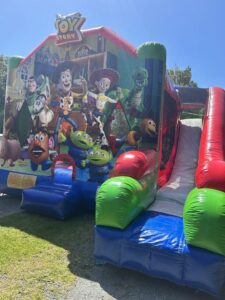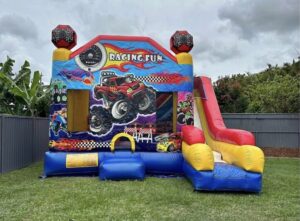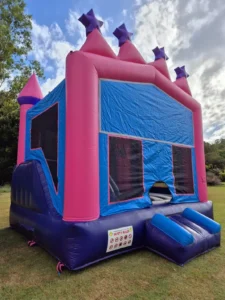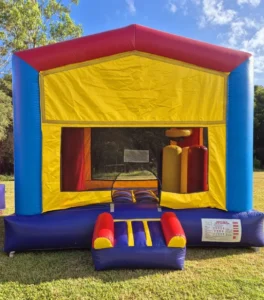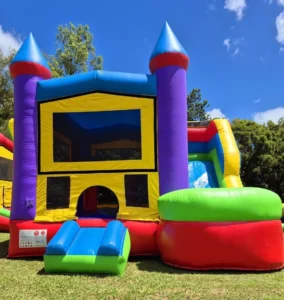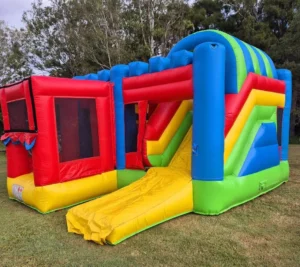What Makes a Daycare Facility Truly Great?
If you are exploring options for a daycare facility, you might wonder what features truly make it stand out. You may already have a long checklist in mind: a tidy building, caring staff, and a fun but secure environment. Yet there is more to consider than meets the eye. Finding a nurturing place that fits your child’s growth and comfort is often a balance of practical details and warm, personalised care. Below, you’ll discover key factors that shape a strong childcare environment, from teacher credentials to daily routines and social dynamics. Let’s tackle each dimension step by step, so you feel confident about choosing a place where children can learn and flourish.
Good news, you do not need to be an early-childhood expert to spot these qualities. By paying attention to a few core elements and asking the right questions, you can avoid the confusion that sometimes comes with daycare shopping. In this guide, we’ll explore each sign of an excellent daycare facility, share gentle encouragement about the process, and point you toward key resources if you want to learn more.
Check staff credentials
Your first major consideration is the team of dedicated professionals who will work with your children daily. After all, these are the people shaping social and cognitive skills, ensuring safety, and inspiring curiosity.
Education and experience
Relevant education, such as a certificate or degree in early-childhood care, sets a strong foundation for the staff’s expertise. According to the National Association for the Education of Young Children (NAEYC), early-childhood programmes typically devote time to child psychology, behaviour management, lesson planning, and basic first aid. Early-childhood programmes typically devote time to child psychology, behaviour management, lesson planning, and basic first aid. Even if a staff member has no formal degree, look for a consistent track record of working with young children in roles such as babysitting, preschool instruction, or summer camp counselling.
Many high-quality centres insist on staff who possess qualifications like:
- Early-childhood education diplomas or degrees
- Extensive childcare experience in a group setting
- Knowledge of child developmental milestones
Good centres also back these credentials with real-life experience. For instance, one Australian wedding childcare provider, Bridal Bliss Nannies, highlights the value of staff with backgrounds in early childhood, nursing, or other child-focused fields. Although the agency specialises in wedding child-minding, the principle holds true for any childcare setting: staff with robust qualifications and practical experience tend to interact calmly and confidently with diverse age groups.
Ongoing training
High-calibre daycare teams do not stop learning after getting their initial certificates. Instead, they keep updating their knowledge by attending workshops, seminars, or refresher courses in areas such as:
- First Aid & CPR
- Behaviour management strategies
- Inclusive education for children with special needs
- Nutrition and meal-planning guidelines
This commitment to professional development shows they value high standards. It also means they can adapt to changing best practices, whether it’s introducing a new creative play technique or learning how to blend advanced technology with classic storytelling.
Assess the environment
The physical space holds enormous importance in shaping your child’s safety, comfort, and ability to learn. A well-maintained, child-friendly environment can encourage active discovery, teamwork, and a sense of belonging in a daycare facility.
Safety and cleanliness
Always check that the daycare facility complies with local regulations. This usually includes up-to-date fire alarms and extinguishers, child-proofed electrical outlets, safe outdoor play areas, and routine inspections. If the centre has a high staff-to-children ratio, monitors each room effectively, and ensures that all adults have valid background checks, you can trust your child is in good hands.
Along with safety comes cleanliness. This includes regular disinfection of surfaces, toys, and shared spaces to minimise the spread of illnesses. It might sound obvious, but it never hurts to see for yourself if tables are wiped down after every meal, if bathrooms are stocked with soap and paper towels, and if staff encourage children to wash hands at logical intervals.
Child-friendly layout
A purposeful layout can stimulate a child’s natural curiosity. Look for:
- Defined activity zones (e.g., reading corner, art table, block area)
- Spacious, uncluttered play areas
- Furniture suited to your child’s height
- Space for both group and independent activities
When laid out properly, each zone supports a child’s desire to explore. For instance, you might see cosy reading corners full of picture books, bright tables where children can color or practice writing, and safe corners for imaginary play with puppets or toy kitchens. Just as outdoor activities require proper space planning—similar to how jumping castle installations need adequate room for safe play—indoor environments must be thoughtfully designed for child development.
Look into curriculum
A daycare centre does more than mind children while you work. It also shapes the building blocks of their future learning. Whether they sing songs, paint pictures, or practise basic maths, these experiences introduce them to a world of knowledge in a gentle, engaging way.
Holistic development
A balanced programme considers a range of skills:
- Language: Singing nursery rhymes, storytelling, or letter recognition
- Motor skills: Running, jumping, or gym-like play
- Social-emotional growth: Sharing toys, conflict resolution, group tasks
- Cognitive skills: Counting, puzzles, memory games
Research from Harvard’s Center on the Developing Child suggests that children thrive when they can trace letters, experiment with shapes, and learn new words in a supportive environment. Some daycares even bring in child-focused specialists, like music or art teachers, to broaden the scope of activities. By encouraging curiosity, problem-solving, and creativity, a well-chosen curriculum sets a strong base for pre-school and beyond. just like play-based learning with our 3 Metre Bouncer can spark joyful exploration at events.
Balanced schedule
It’s also vital to see if the day is structured into predictable blocks. This includes:
- Arrival and welcome
- Morning circle (songs, stories)
- Play sessions (both free and structured)
- Snack/lunch breaks
- Outdoor exploration when weather permits
- Quiet time or naps for younger children
- Afternoon craft or small-group activities
Good news, a balanced routine ensures children stay engaged without being overwhelmed. They learn to anticipate what comes next, which can create a comforting sense of order. Plus, regular breaks for meals and rest help maintain energy and cooperation. Outdoor fun options like the Big Top or other castles can complement these schedules perfectly for weekend events or parties.
Consider communication
As a parent or guardian, you want to know what’s going on with your child during the day. A great childcare environment values regular updates, honest conversations, and genuine partnership with families.
Regular updates
Some providers send written reports at pick-up time, highlighting your child’s mood, what they ate, or any special accomplishments. Others use short daily conversations, letting you know about your child’s new interests or any concerns that might need attention. Digital tools, such as apps or email updates, can also give busy parents a snapshot of the day.
If a centre invests in consistent communication, you will feel more involved and more prepared to reinforce lessons at home. For instance, if you learn your child is enjoying puzzle time, you could find similar activities for the weekend. If staff mention that your little one is in an especially creative mood, you might encourage painting at home. This partnership keeps learning consistent across settings.
Parent involvement
Children thrive when families and daycare staff collaborate. Events like open houses, parent-teacher conferences, or family fun days also help you get a sense of the centre’s community spirit. Some parents volunteer to read stories, share cultural traditions, or bring in healthy snacks for celebrations. When planning special events, facilities might even coordinate with entertainment services—you can check delivery options to understand how professional services handle logistics for children’s activities.
Evaluate staff-child ratio
Ratios matter because they affect how much personal attention each child can receive. Large groups with too few caregivers can lead to chaos, leaving some children feeling neglected. Meanwhile, a lower ratio allows staff to observe each child’s behaviour more closely and respond quickly when support is needed.
Personal attention
When an adult has to juggle fewer children, they can truly get to know individual personalities, learning styles, and emotional triggers. This knowledge helps them guide positive behaviour, share feedback with parents, and tailor activities to specific strengths or needs.
You might even see day-to-day benefits, such as:
- More frequent one-on-one chats about how children are feeling
- Quick identification of learning challenges
- Greater sense of security for toddlers or younger kids
Activities like our Toddler Combo can also support a secure, joyful environment for young children. In some localities, there are regulations setting a maximum number of children per caregiver. Although meeting these guidelines is legally required, the most conscientious daycare centres go beyond the basic standard to ensure each child has attentive care.
Group dynamics
Personal attention is one side of the coin. The other side is ensuring that group play remains effective, with minimal conflicts. If staff can spot signs of tension early or notice that one child is struggling to join an activity, they can step in and steer the group toward a more positive direction.
Good group dynamics also reduce the likelihood of bullying or harmful teasing. In rooms with balanced staff-child ratios, children grasp the concept of teamwork sooner because they see each situation supervised and guided by an alert adult.
Explore cost and subsidy
Of course, no discussion about picking childcare is complete without addressing financial considerations. Daycare can be an investment, but there are multiple ways to find a cost structure that works. From sliding-scale fees to government-assisted programmes, your budget does not need to stand in the way of top-quality care.
Tuition, fees, and add-ons
Daycare costs vary widely depending on location, available facilities, staff qualifications, and even which meals are included. Make sure you:
- Ask for a breakdown of tuition (weekly or monthly)
- Clarify if there are holiday or closure fees
- Check if materials (e.g., art supplies) or field trips come at an extra cost
- Confirm if late pick-up fees apply
You may want to compare different facilities to see if the cost covers everything your child needs each day. If you’re curious about typical childcare expenses, you can learn more through resources such as how much does daycare cost per month and see how entertainment extras like Monster Truck Combo compare in value.
Financial assistance
Governments and local authorities sometimes offer subsidies for families who meet specific criteria. These programmes can drastically reduce the overall cost, making day-to-day expenses more manageable. To see if you qualify, take a look at helpful guides like Child Care Subsidy information on ChildCare.gov or how to apply for child care subsidy. Both pages offer step-by-step tips about eligibility requirements, application forms, and typical timelines.
Good news, you might find that a slight paperwork effort grants significant savings. If you’re unsure where to start, ask the daycare staff. Many are happy to guide you through possible funding avenues. This kind of open, ongoing support is another hallmark of a high-quality daycare facility.
Encouragement and next steps
Choosing a daycare can feel like a big decision, but you are not alone. By focusing on the points above, you can quickly scan any child-minding option to see if it meets your family’s standards. Perhaps you want to start by scheduling short visits to a couple of nearby centres. You can look into local guides when searching for best daycare centers near me if you need help building your shortlist.
Feel free to ask all the questions you want: you deserve clear answers about the qualifications of the caregivers, the approach to learning, and the centre’s processes for emergencies or parent communication. A top-notch daycare facility will be eager to show you around, let you observe daily routines, and talk about its educational values. If you have unique circumstances, like rotating work schedules or a child with special needs, they will work with you to create a plan.
With each visit, trust your observations and instincts. Look at how staff greet the children, see if the environment feels lively yet calm, and note how communication flows among teachers, kids, and parents. We are cheering you on as you explore your options and find a happy, dynamic place that suits your child. As soon as it feels right, you will know, and your child’s smile each morning will be the best validation of your choice.
Ready to take the next step? Go ahead and schedule a tour at a local centre, chat with a staff member, or simply browse official websites for more details about a daycare facility. Ensuring a safe, nurturing space now can have a lasting impact on your child’s confidence and social well-being. You have the power to shape these early experiences, and the effort you put in will pay off in a lifetime of strong growth and happy memories.
You’ve got this. Start with one centre visit or phone call, and rely on the strategies in this guide to help you feel prepared. A caring, educationally rich daycare facility can be the cornerstone of a child’s early development, and you are on the right track to find the best match.
Choosing the Right Daycare Facility with Confidence
Selecting the ideal daycare facility goes far beyond surface-level checklists. It’s about identifying a warm, well-structured environment where your child feels safe, engaged, and supported. With so many options available, understanding the core qualities of an exceptional centre—qualified staff, thoughtful layouts, holistic learning, consistent communication, and transparent pricing—can make all the difference.
As you explore your choices, remember that the best decisions are informed by both research and intuition. Visit facilities, observe interactions, and don’t hesitate to ask questions. Your child’s early years are foundational, and with the right daycare facility, you’re giving them a joyful, secure space to grow.
Ready to book the fun?
Leapfrog Jumping Castle Hire brings joy to your backyard! Our safe, vibrant castles are perfect for birthdays, school events, and everything in between. Contact us today to lock in your date and let the good times bounce!
Frequently Asked Questions
1. What is a daycare facility?
A daycare facility is a professional childcare center that provides supervision, learning activities, and basic care for children, typically while parents are at work or school. These centers offer structured routines, age-appropriate learning, and socialization opportunities in a safe and nurturing environment.
2. How do I apply for subsidized daycare?
To apply for subsidized daycare, start by contacting your local or state child care assistance agency. You’ll typically need to:
- Complete an application form (online or in-person)
- Provide proof of income, employment, or school enrollment
- Submit identification and residency documents
Once approved, the government may cover part or all of your daycare costs, depending on your eligibility.
- How do I apply for daycare subsidy?
The process for applying for a daycare subsidy usually involves:
- Visiting your local Department of Social Services or childcare assistance program website
- Filling out a subsidy application
- Providing documentation such as pay stubs, tax returns, and proof of household size
- Eligibility varies by region, so be sure to check specific guidelines for your location.
4. How do I apply for child care subsidy?
To apply for a child care subsidy, gather the following:
- Proof of income and employment status
- Child’s age and school information (if applicable)
- Valid ID and residency proof
Then, submit these documents through your region’s subsidy portal or in person at a designated office. Some daycare facilities can also guide you through the application process.
5. What is the subsidy?
A subsidy is a financial assistance program that helps families cover the cost of childcare. Offered by local or national governments, subsidies reduce out-of-pocket expenses for qualified applicants based on income, employment, or special circumstances. The goal is to make high-quality daycare more accessible to all families.
6. What does “daycare facility” mean?
A daycare facility refers to a licensed center that offers daytime care for infants, toddlers, and young children. These facilities combine safety, early learning, and structured play to support a child’s development while providing peace of mind for working parents.
7. How can I find daycare centres near me?
You can find daycare centres near you by:
- Searching online using terms like “daycare centres near me” or “childcare near me”
- Visiting government childcare directories like ChildCareAware.org
- Asking for recommendations from friends, schools, or local community groups
Don’t forget to visit facilities in person, ask questions, and observe how staff interact with children before enrolling. And if you’re celebrating milestones, check out our Rainbow Combo to bring colorful joy to your event!
8. How do I locate a daycare facility in my area?
To find a daycare facility in your area, consider:
- Using Google Maps or Yelp to search with keywords like “daycare facility in my area”
- Exploring local childcare resource and referral networks
- Checking listings on trusted parenting forums or your municipality’s official site
Always schedule tours and compare facilities to ensure they meet your child’s unique needs.
Key takeaways
- Look for centres with staff who have proper learning and child-safety backgrounds, plus ongoing training.
- Observe the overall environment, including safety features, cleanliness, and a stimulating layout.
- Explore the curriculum to ensure it offers variety, covers developmental areas, and follows an organized routine.
- Check how a centre communicates with parents, from daily updates to welcoming parental feedback.
- Prioritize lower staff-child ratios to see more personal attention and healthier group dynamics.
- Weigh the financial details carefully, including possible subsidies and fee structures.









